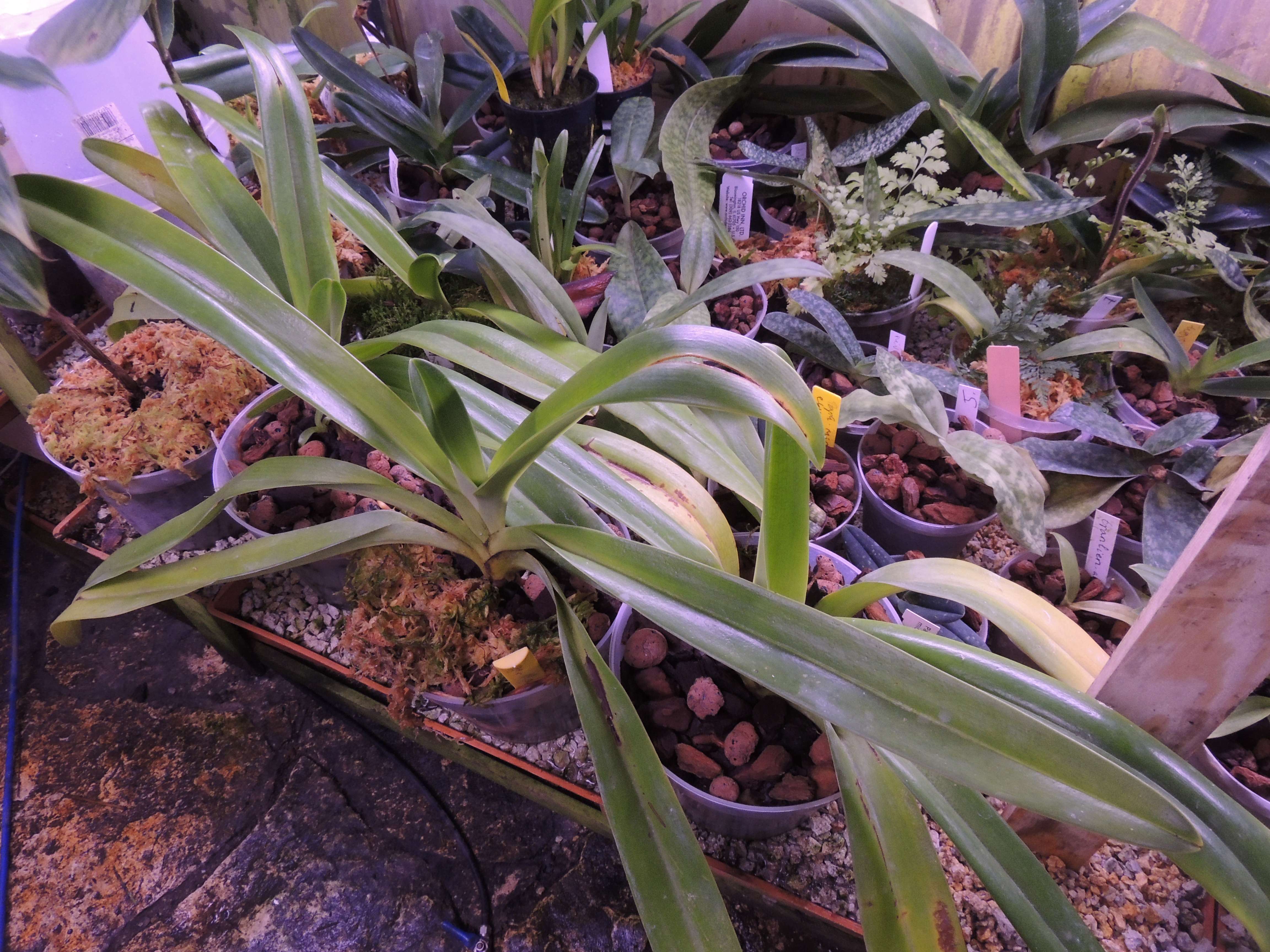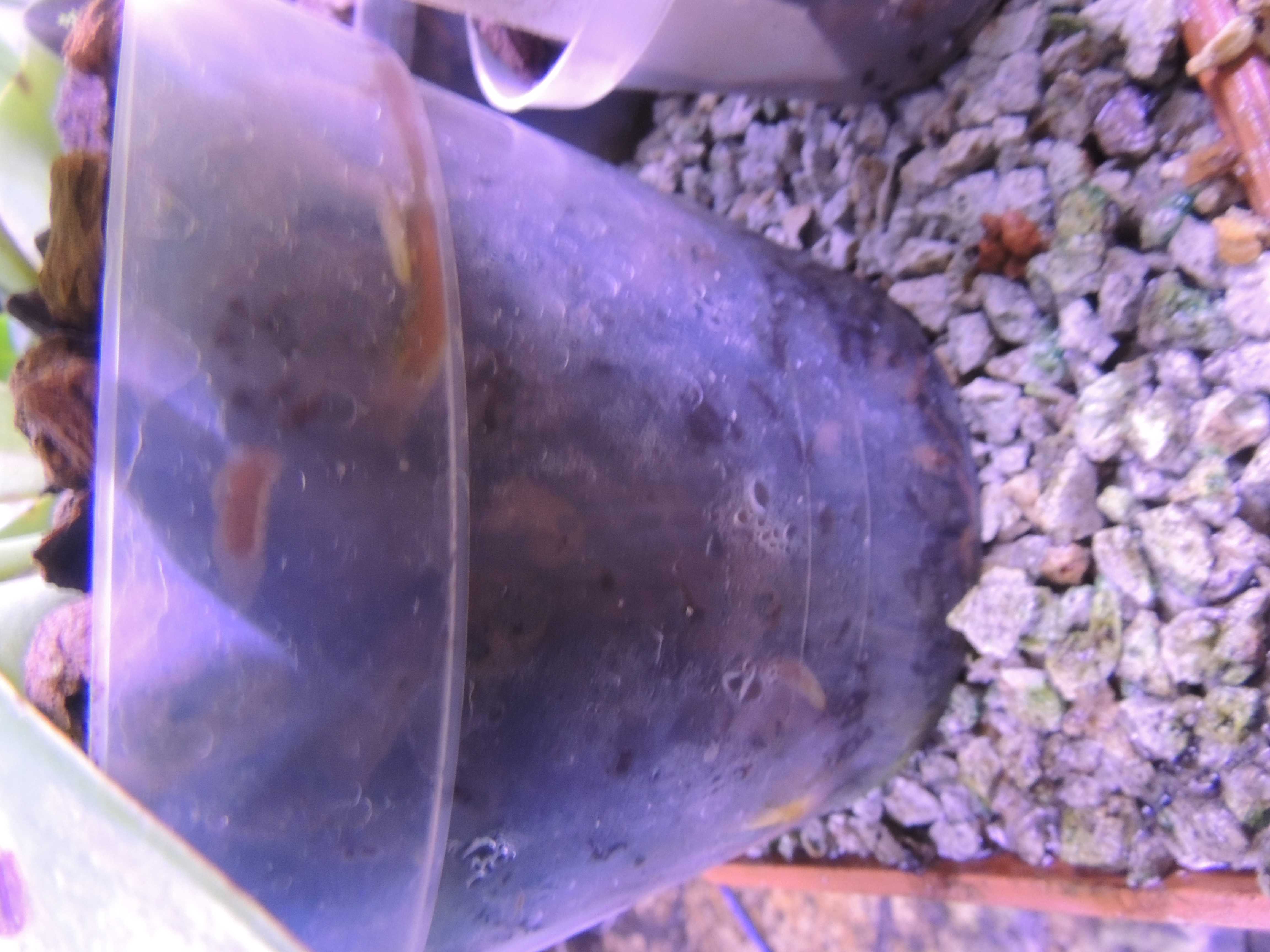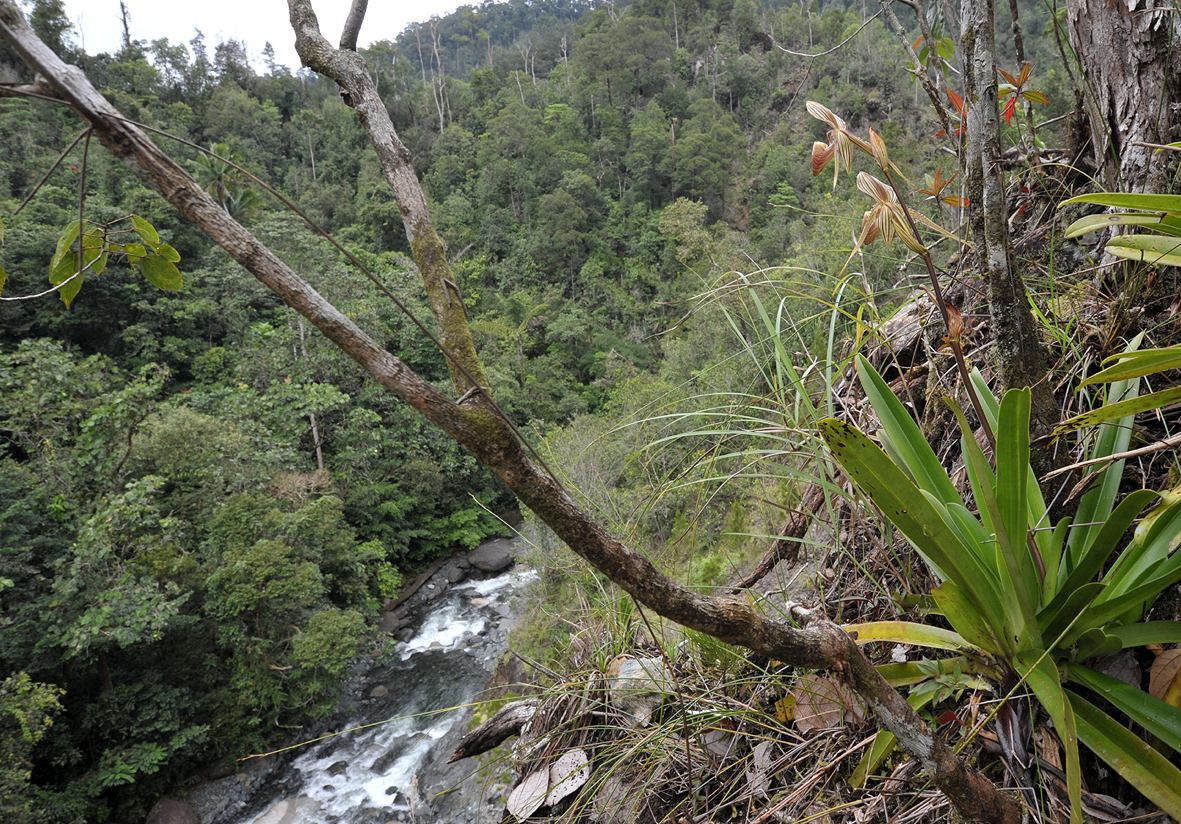In my experience, the only things that respond to dimming the lights are, teenagers, moths and bats!
The plants in question are teenagers.

In my experience, the only things that respond to dimming the lights are, teenagers, moths and bats!
I did flush the pots and only give them tap water for about a month I think, because I thought I had given too concentrated doses of fertilizer. The leaf death did slow down then, but that could've been caused by too much fertilizer, so the results are inconclusive. The best would be if I could collect rain water, but that's not possible. I do have access to RO water now, so I thought 50/50 tap and RO should get pretty close to rain water.To be honest, I think this has all become very technical, I doubt that the problems are all that great. I would hesitate to embark on a huge biochem crusade. Most problems are corrected by checking potting mix (4 parts bak, sphagnum and perlite does not sound bad, having said that I might be tempted to loose the surface dressing of sphagnum) water, ( the council water does not seem bad, perhaps a bit basic, so perhaps a slight correction to a pH of around 6.5 might be appropriate. Lighting, most paphs (without getting too technical) do fairly well with light conditions in most well lit rooms, and enjoy an east window if available, good humidity, gentle movement of air and then a bit of food. Many threads point out that a lot of orchids do well with no feeding other than what they get in their water. I have often found that if I encounter problems, that reverting to plain water for a month or two will generally see a general improvement (which further emphasizes the dilemma of wether to feed or not, and if to feed, then how much?). I would only then start to fiddle with chemicals. I would start with a dilute organic such as kelp and then start with the inorganics. I am a bit concerned that Mutant is changing too many things too quickly. ( sorry, that is a carpenter talking, not a scientist, I just believe a safe solution is one in moderation)
I need some 25-10-10, then I'm golden.I totally agree! KISS (Keep it simple stupid) I use my regular fertilizer of 25-10-10, 20-20-20 and 10-52-10 and have not used 'special fertilizer' and they still grow well. I think water quality is detrimental to the health of orchids in general! If you can't drink the tap water then your orchids will probably not like it either!


I totally agree! KISS (Keep it simple stupid) I use my regular fertilizer of 25-10-10, 20-20-20 and 10-52-10 and have not used 'special fertilizer' and they still grow well. I think water quality is detrimental to the health of orchids in general! If you can't drink the tap water then your orchids will probably not like it either!
It seems to be a problem here too... I hope I'll be able to fix this issue, 'cause I really want my multis (and the rest) to grow as well as they can, in my windowsill conditions. I just repotted the acclaimed 'MM' x self roth, and it had a very nice root system, so the roots are not the issue on at least two of the roths.I agree 100% with Paphman and Trithor! I like the KISS method. Last year started trying to complicate stuff. Bought an RO system, k-lite and started putting oyster shells. At first i saw improvements. Then suddenly all my plants showed leaf bleaching. The parvis were affected the most. Some of the leaves turned white!!! Then i followed the advice of some good friends and went back to using tap water (tds 190 ph 7.7) and 25-10-10 fertilizer with some ammonium and urea. Now after 3 months most have greened up and growing better than ever.
I'm not saying that all those things are bad. I still believe that low-k is the way to go. But it's the nitrate that gave me problems. I wish they would create a k-lite with some ammoniacal and urea N.
After all these, I learned a few things. Take all the advice your read here with a grain of salt. If something works then don't change it. And most importantly just because one thing works for someone, that doesn't mean it will always work for you and your conditions.
The scientist in me loves reading all the posts here. But I'll leave the experimenting to the real scientists!
Plant whitening can point on Mg deficiency!
There is an important thing what we have to keep always in mind: RATIOS!
I see this on my father's phalas: they gets traditional fertilizer, but with tap water. It conains many Mg and Ca, hardness is cc. 25 german degree here!!!
TDS of tap water is 270ppm here! So there is not secondary Ca or Mg deficiency here due to tap water.
I always used soft water with traditional fertilizer, many of my plants died within a certain time. Now I use K-lite, but I use it with adding Ca and Mg, too, improvement is unbelivable.
This is what I'm doing now. If it doesn't work, I'll try what you did. That's the plan at least.Yeah magnesium can cause pale leaves. So i tried supplementing with magnesium first. Nothing happened. When I started feeding with the 25-10-10, that's when my plants greened up. My tap has 35 ppm Ca and 9 ppm Mg.
As i have said, what works for me may not work for someone else. It pays to know your water quality.
Almost all have roots, especially 'Starship', it had an impressive root system when I repotted it a month ago. 'Oriental Red' x 'MM' has one viable root that I can see without digging in the pot, plus it has a new root growing. The acclaimed 'MM' x self, I don't know. It's time to repot it soon, so then I'll see what the roots look like. 'Jim Krull' x 'CC' has no viable roots or new roots that I can see, unfortunately.
That's the plan.Your water is ok. I'd use it from tap. Try supplementing with magnesium. If u don't see any improvement try a fertilizer with some ammonium and urea. That would also bring down the ph a bit. Don't use more than 1/4 tsp/gallon every feeding. And yes seaweed is always good!
But the most yellow roth is the one with the best root system too, so it seems weird.Only the first plant looks excessively yellow.
Some of the original photos the leaves look too green and that is why I told you about comparing photos.
Dark green leaves are not always better than light green.
The pale color is most likely ONLY due to the bright light.
I'm not seeing a nutrient deficiency that would be caused by the fertilizer you have been using. It looks like the plants have not been able to use the nutrients correctly because of two things.... poor roots and too much light.
With high light intensity the leaf temperature overheats and the plant is not able to use the nutrients correctly.
I think diagnosing the problem as a mineral shortage that can be corrected by a fertilizer formula change is not correct.
In reality what your are seeing is the "die off" problem that is being contributed to excess potassium.
Only the first plant looks excessively yellow.
Some of the original photos the leaves look too green and that is why I told you about comparing photos.
Dark green leaves are not always better than light green.
The pale color is most likely ONLY due to the bright light.
I'm not seeing a nutrient deficiency that would be caused by the fertilizer you have been using. It looks like the plants have not been able to use the nutrients correctly because of two things.... poor roots and too much light.
With high light intensity the leaf temperature overheats and the plant is not able to use the nutrients correctly.
I think diagnosing the problem as a mineral shortage that can be corrected by a fertilizer formula change is not correct.

In reality what your are seeing is the "die off" problem that is being contributed to excess potassium.
That's the plan.
The Phals got so many roots, I had to stop giving it to them.
But the most yellow roth is the one with the best root system too, so it seems weird.But, the T5 was too close to the plants, which is why I raised it, so I do believe it has contributed to the problem.
So despite the fact that I've used K-lite for a year, they still suffer from excess K?
Actually, Stone answered you question/statement on this thread
The pictures that mutant posted is in fact paler compared to the wild rothschildianum.


That is also true in most in-situ photos that the plants are green in colour. Not pale yellow.
So as Stone have stated, you should at least aim for that colour more or less.
She was already using K-lite... How much more pottasium do you suggest that she reduce?
In my experience, the only things that respond to dimming the lights are, teenagers, moths and bats!
The green leaf veins and pale leaves suggest magnesium deficiency to me.
Too much light is a possible reason... To test this give them some magnesium (epson salts) and if they don't get green then dim the lights a bit and see if the plants respond.
The plants are clearly growing so I don't think nitrogen is the issue.[/
If they are getting klite they are recieving more than enough Mg. Mg deficiency show up in the older leaves first. This is much more like an N problem possibly coupled with low suphur (not much in klite)
A lack of either or both of these is seen as general paleness.
Last summer my roths got ''Cattleya light'' I mean I had to wear sunglasses at midday and they remained a good green. Not dark but I guess you could call it grass green.The pale color is most likely ONLY due to the bright light.
I'm not seeing a nutrient deficiency that would be caused by the fertilizer you have been using. It looks like the plants have not been able to use the nutrients correctly because of two things.... poor roots and too much light.
I don't think you could come up with a more classic case of mineral shortage.I think diagnosing the problem as a mineral shortage that can be corrected by a fertilizer formula change is not correct.
Thats a very forthright statement! Unfortunately it dosent stand up at all. How come eggshells, paphman's and mine ( and no doubt countless others) are not ''dieing off'' yet all get ''standard'' K? BTW Lance, tell us what you feed your plants.....In reality what your are seeing is the "die off" problem that is being contributed to excess potassium.
Enter your email address to join: